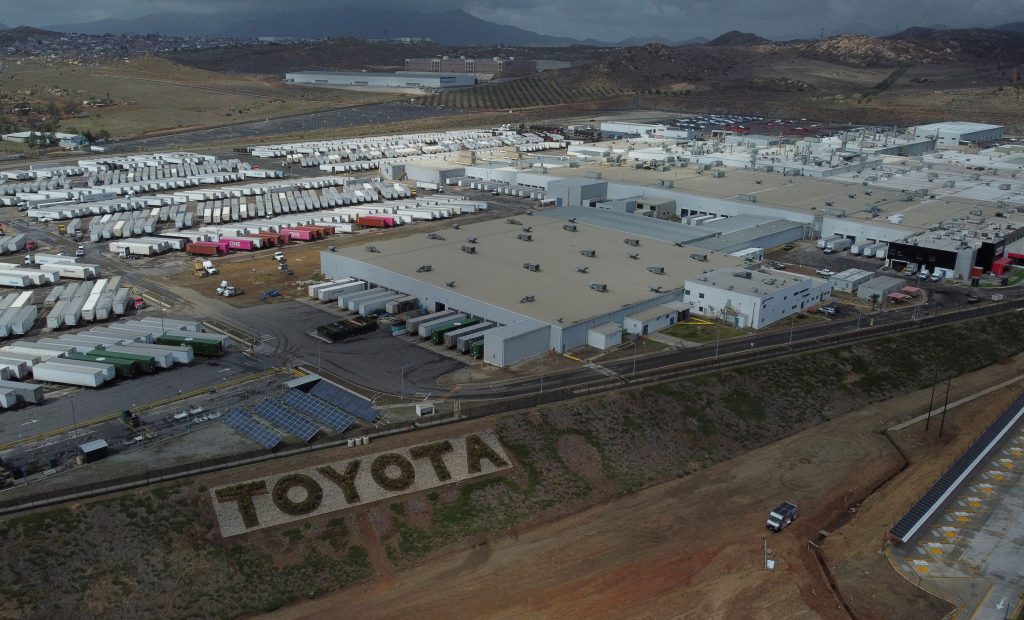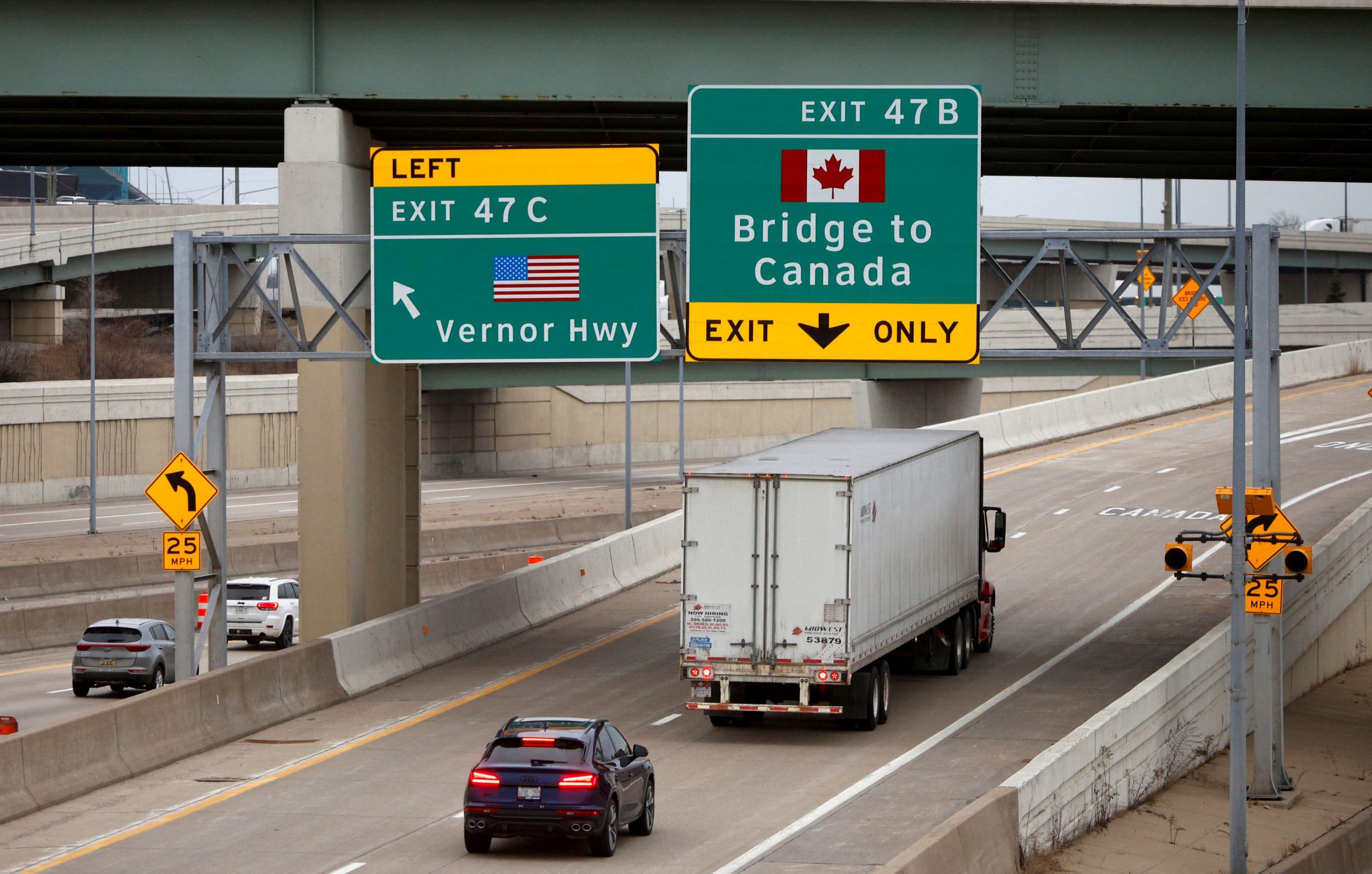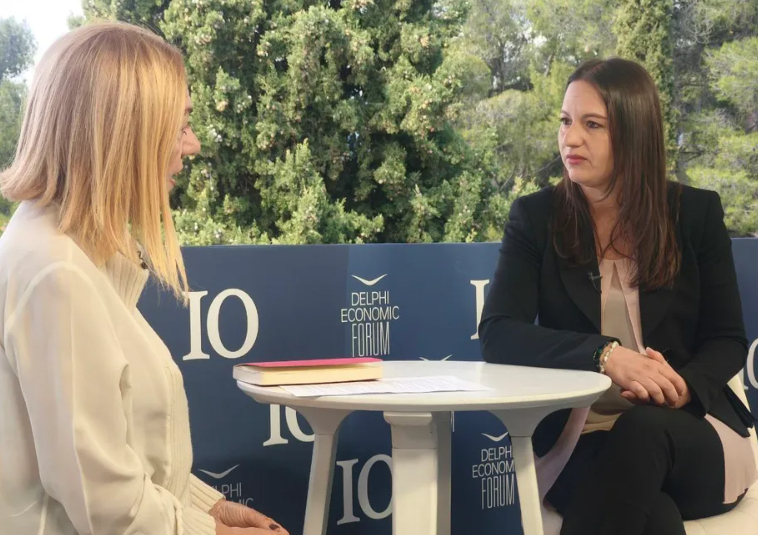Trump’s sweeping new tariffs on imports from Canada and Mexico took effect Tuesday, marking a sharp escalation in trade tensions between the United States and its top North American partners. The measures impose a 25% duty on a wide range of Mexican and Canadian goods, alongside a doubling of tariffs on Chinese imports to 20%, further fueling global economic uncertainty.
According to Reuters, the tariffs, which could impact nearly $2.2 trillion in annual trade, come after President Donald Trump accused all three nations of failing to curb the flow of fentanyl and its precursor chemicals into the U.S. The decision is expected to trigger immediate retaliation, with both Canada and Mexico poised to respond with their own trade barriers.

FILE PHOTO: FILE PHOTO: A Canadian coast guard vessel navigates the Detroit River which connects Windsor, Ontario, Canada, and Detroit, Michigan, U.S., as trade tensions escalate over U.S. tariffs and retaliatory measures by Canada, in Windsor, Ontario, Canada February 4, 2025. REUTERS/Carlos Osorio/File Photo/File Photo
Canada and Mexico Hit Back
In a swift reaction, Canadian Prime Minister Justin Trudeau announced countermeasures, including 25% tariffs on $20.7 billion (C$30 billion) worth of U.S. imports, with an additional $86.2 billion (C$125 billion) in tariffs if the dispute persists beyond three weeks. Targeted goods include American beer, wine, bourbon, home appliances, and Florida orange juice—a move designed to hit key U.S. industries.
Prime Minister Justin Trudeau’s statement on unjustified U.S. tariffs against Canada: https://t.co/t2eD8gTvlx
— CanadianPM (@CanadianPM) March 4, 2025
“Tariffs will disrupt an incredibly successful trading relationship,” Trudeau said, calling the move a violation of the U.S.-Mexico-Canada Agreement (USMCA), the free trade deal signed by Trump in his first term.
Meanwhile, Ontario Premier Doug Ford signaled that Canada could cut off shipments of nickel and electricity exports to the U.S. in retaliation. Mexican President Claudia Sheinbaum is expected to announce Mexico’s response later today.
China Also Targeted as Trade War Expands
The administration’s latest move also doubles existing tariffs on Chinese goods to 20%, adding to an earlier 10% duty imposed in February as part of Trump’s broader crackdown on Beijing’s role in the fentanyl crisis. The new tariffs target major U.S. consumer electronics imports, including smartphones, laptops, video game consoles, smartwatches, and Bluetooth devices, which had previously been exempt from duties.
China swiftly condemned the move, with its Commerce Ministry vowing countermeasures while accusing Washington of unfairly shifting blame for its opioid crisis. The state-backed Global Times suggested that U.S. agricultural and food exports—a vital sector for American farmers—could be in Beijing’s crosshairs for retaliation.
Economic Fallout and Recession Concerns
The tariffs on Mexico and Canada could have wide-reaching economic consequences, as the three nations share deeply integrated supply chains across the automotive, manufacturing, energy, and agricultural sectors.
Global financial markets tumbled in response to the tariff announcement, with both the Canadian dollar and Mexican peso weakening against the U.S. dollar. Meanwhile, U.S. factory price data on Monday indicated rising inflation, raising fears that additional tariffs could further strain production and drive up consumer prices.

A drone view shows the Toyota manufacturing plant in Tijuana, Mexico, March 3, 2025. REUTERS/Jorge Duenes
More Trade Clashes on the Horizon
Trump’s “America First” trade agenda shows no signs of slowing down. His administration has already restored 25% tariffs on steel and aluminum imports, set to take effect March 12, while launching a national security investigation into lumber and wood imports—a move that could particularly impact Canada, which already faces 14.5% tariffs on softwood lumber.
Additionally, the White House is considering new “reciprocal tariffs” to match levies imposed by other nations, a policy that could heighten tensions with the European Union.
As Trump prepares to address Congress later tonight, his trade policies will likely take center stage, setting the tone for a high-stakes election-year showdown over economic nationalism and global trade relations.



